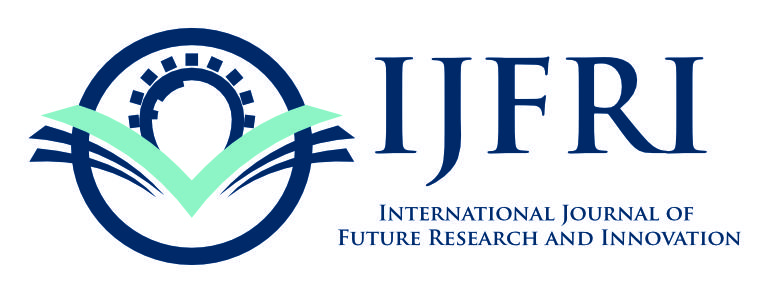Machine Learning based Credit Card Fraud Detection Model
Main Article Content
Abstract
Credit card fraud continues to be a pervasive and costly issue in the financial industry, necessitating robust and efficient solutions for detection and prevention. Machine learning has become an effective method for determining fraudulent transactions, offering the potential to save financial institutions and consumers billions of dollars annually. This research paper explores the application of Python , a comprehensive machine learning platform, to deploy a fraud detection system for credit cards. In this research, we initially review the existing literature on credit card fraud detection methods and highlight the challenges faced by conventional approaches. Then, we describe our approach, which entails feature engineering, data preparation, and the application of various machine learning techniques. To leverage the scalability, ease of deployment, and cost-efficiency of Python , we guide the reader through the model development and deployment process on the platform. Our findings indicate the machine learning model's efficacy in precisely identifying fraudulent credit card transactions. We provide a thorough analysis of the model's effectiveness, including measures like accuracy, precision, recall, F1-score. Furthermore, we discuss the advantages and considerations of using Python for using machine learning models in actual situations involving fraud detection. This research paper aims to provide financial institutions, data scientists, and researchers with valuable insights into leveraging Python detection of credit card fraud. Finally things conclude by emphasizing the significance of this approach in enhancing security and minimizing financial losses due to fraudulent activities.
Article Details
Section

This work is licensed under a Creative Commons Attribution 4.0 International License.
All articles published in the International Journal of Future Research and Innovation (IJFRI) are licensed under a Creative Commons Attribution 4.0 International License (CC BY 4.0). Authors retain copyright and grant IJFRI the non-exclusive right to publish, distribute, and archive the work.
How to Cite
References
Habibpour, M., Gharoun, H., Mehdipour, M., Tajally, A. R., Asgharnezhad, H., Shamsi, A., Khosravi, A., Shafie-Khah, M., & Nahavandi, S. (2021). Uncertainty-aware credit card fraud detection using deep learning. Engineering Applications of Artificial Intelligence, 111, 104878. https://doi.org/10.48550/arXiv.2107.13508
Shenvi, P., Samant, N., Kumar, S., & Kulkarni, V. (2019). Credit card fraud detection using deep learning. In 2019 IEEE 5th International Conference for Convergence in Technology (I2CT) (pp. 1–5). IEEE. https://doi.org/10.1109/I2CT45611.2019.9033906
Shen, X., Jain, V., & Huang, X. (2022, October). Detect fraudulent transactions using machine learning with Amazon SageMaker. AWS ML Blog https://aws.amazon.com/blogs/machine-learning/detect-fraudulent-transactions-using-machine-learning-with-amazon-sagemaker/
More, R. S., & Awati, C. J. (2020). Credit card fraud detection using supervised learning approach. International Journal of Scientific & Technology Research, 9(10), 216–218. https://www.ijstr.org/final-print/oct2020/Credit-Card-Fraud-Detection-Using-Supervised-Learning-Approach.pdf
Géron, A. (2019). Hands-on machine learning with Scikit-Learn, Keras, and TensorFlow (2nd ed.). O’Reilly Media.
Chollet, F. (2018). Deep learning with Python. Manning Publications.
Amazon Web Services. (n.d.). Amazon SageMaker Documentation. https://docs.aws.amazon.com/sagemaker/
Breunig, M. M., Kriegel, H.-P., Ng, R. T., & Sander, J. (2000). LOF: Identifying density-based local outliers. ACM SIGMOD Record, 29(2), 93–104. https://doi.org/10.1145/335191.335388
Bishop, C. M. (2006). Pattern recognition and machine learning. Springer.
Davis, J., & Goadrich, M. (2006). The relationship between precision-recall and ROC curves. In Proceedings of the 23rd International Conference on Machine Learning (pp. 233–240). ACM. https://doi.org/10.1145/1143844.1143874
Kingma, D. P., & Ba, J. (2014). Adam: A method for stochastic optimization. arXiv preprint arXiv:1412.6980. https://doi.org/10.48550/arXiv.1412.6980
LeCun, Y., Bengio, Y., & Hinton, G. (2015). Deep learning. Nature, 521(7553), 436–444. https://doi.org/10.1038/nature14539
Pedregosa, F., Varoquaux, G., Gramfort, A., Michel, V., Thirion, B., Grisel, O., ... & Vanderplas, J. (2011). Scikit-learn: Machine learning in Python. Journal of Machine Learning Research, 12, 2825–2830.
http://www.jmlr.org/papers/volume12/pedregosa11a/pedregosa11a.pdf
Schölkopf, B., Platt, J. C., Shawe-Taylor, J., Smola, A. J., & Williamson, R. C. (2001). Estimating the support of a high-dimensional distribution. Neural Computation, 13(7), 1443–1471. https://doi.org/10.1162/089976601750264965
Theis, F. J., & Bethge, M. (2015). Generative image modeling using spatial LSTMs. In Advances in Neural Information Processing Systems (pp. 1927–1935).
Zheng, Z., Zheng, L., & Yang, Y. (2017). Unlabeled samples generated by GAN improve the person re-identification baseline in vitro. In Proceedings of the IEEE International Conference on Computer Vision (ICCV) (pp. 3754–3762). https://doi.org/10.1109/ICCV.2017.403
San Miguel Carrasco, R., & Sicilia-Urban, M. Á. (2020). Evaluation of deep neural networks for reduction of credit card fraud alerts. IEEE Access, 8, 186421–186432. https://doi.org/10.1109/ACCESS.2020.3026222
Amazon Web Services. (2019). Machine Learning in the AWS Cloud: Add Intelligence to Applications with Amazon SageMaker. John Wiley & Sons.
Kou, Y., Lu, C. T., Sirwongwattana, S., & Huang, Y. P. (2004). Survey of fraud detection techniques. In IEEE International Conference on Networking, Sensing and Control (Vol. 2, pp. 749–754). IEEE. https://doi.org/10.1109/ICNSC.2004.1297040
Dal Pozzolo, A., Boracchi, G., Caelen, O., Alippi, C., & Bontempi, G. (2018). Credit card fraud detection: A realistic modeling and a novel learning strategy. IEEE Transactions on Neural Networks and Learning Systems, 29(8), 3784–3797. https://doi.org/10.1109/TNNLS.2017.2736643
Jain, V., Agrawal, M., & Kumar, A. (2020). Performance analysis of machine learning algorithms in credit card fraud detection. In 2020 8th International Conference on Reliability, Infocom Technologies and Optimization (ICRITO) (pp. 191–196). IEEE. https://doi.org/10.1109/ICRITO48877.2020.9197802
Carcillo, F., Le Borgne, Y. A., Caelen, O., Kessaci, Y., Oblé, F., & Bontempi, G. (2019). Combining unsupervised and supervised learning in credit card fraud detection. Information Sciences, 557, 317–331. https://doi.org/10.1016/j.ins.2019.05.042
Armel, & Zaidouni, D. (2019). Fraud detection using Apache Spark. In 2019 5th International Conference on Optimization and Applications (ICOA) (pp. 1–6). IEEE. https://doi.org/10.1109/ICOA.2019.8727610
SageMaker Random Cut Forest (RCF) Algorithm Documentation. (n.d.). https://docs.aws.amazon.com/sagemaker/latest/dg/randomcutforest.html
Amazon SageMaker. (n.d.). Julia on SageMaker [Whitepaper]. https://d1.awsstatic.com/whitepapers/julia-on-sagemaker.pdf

